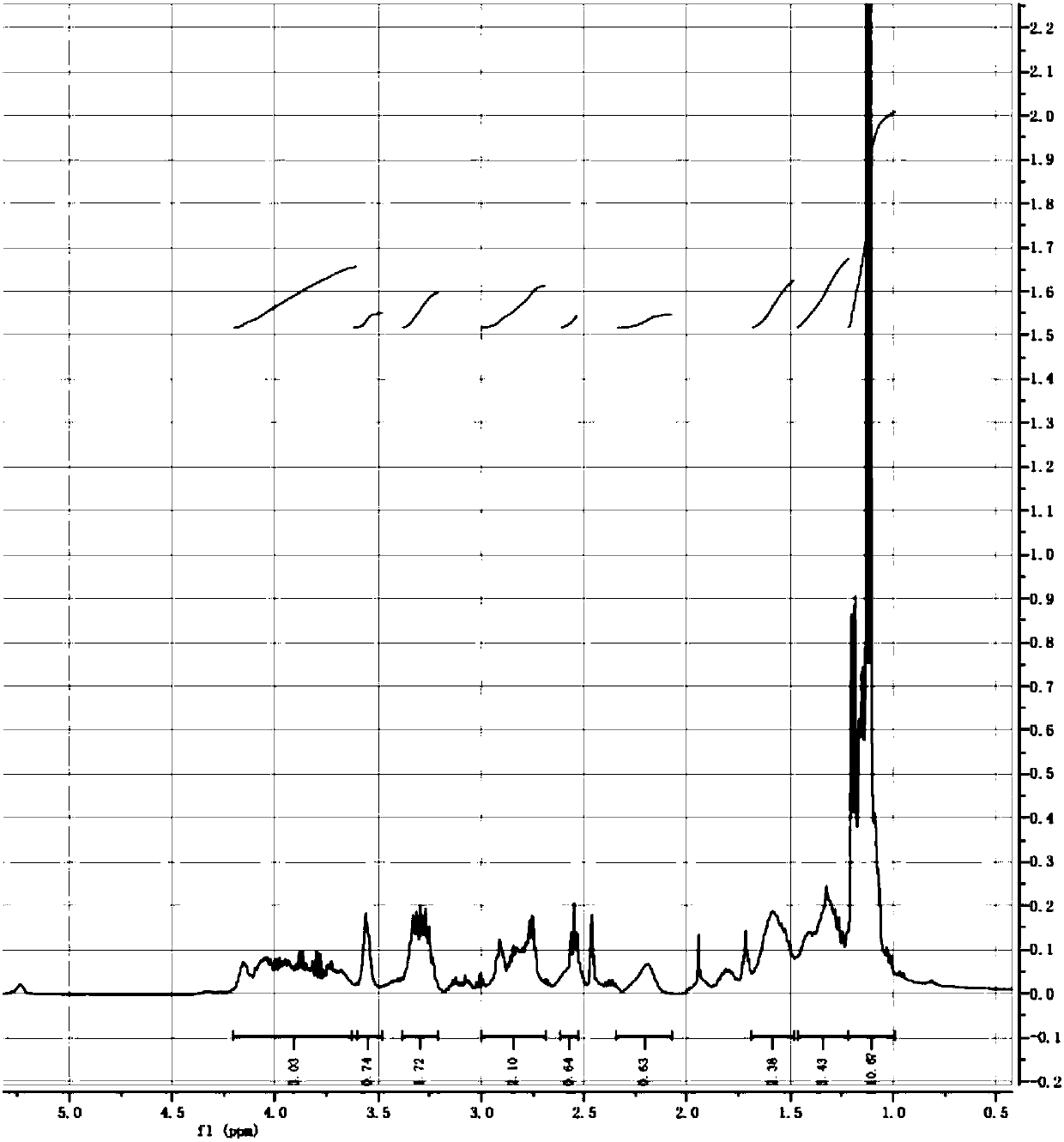DNA with end group modified by sulfur-containing reagent and preparation method of DNA with end group modified by sulfur-containing reagent
An end group, lipoic alcohol technology, applied in the field of DNA end group modification, can solve problems such as inability to meet scientific research and commercial needs, and achieve the effects of a simple and efficient preparation method, good universality and stability, and convenient operation.
- Summary
- Abstract
- Description
- Claims
- Application Information
AI Technical Summary
Problems solved by technology
Method used
Image
Examples
preparation example Construction
[0038] A method for preparing DNA modified with sulfur at the end, comprising the following steps:
[0039] Step 1: preparing phosphoramidite lipoyl ester: including the step of obtaining lipoyl ester through esterification reaction after taking lipoic acid as raw material through reduction reaction to obtain lipoyl ester;
[0040] Step 2: Prepare terminal-modified DNA: Dissolve phosphoramidite lipoctyl ester in anhydrous acetonitrile as terminal-modifying reagent and synthesize with DNA to obtain terminal-sulfur-modified DNA.
[0041] The reaction process in step 1 is shown in reaction formula 1:
[0042]
[0043] Wherein compound III is lipoic acid, compound IV is lipoyl alcohol, and compound II is phosphoramidite lipoyl ester.
[0044] The reaction process in the step 2 is shown in reaction formula II:
[0045]
[0046] Compound V is a 5'-end hydroxylated DNA sequence immobilized on a carrier, compound VI is a 5'-end functionalized DNA sequence immobilized on a carr...
Embodiment 1
[0061] A method for preparing DNA modified with sulfur at the end, comprising the following steps:
[0062] Step 1: Preparation of lipoic alcohol: Dissolve 1.0 g of sodium trimethoxyborohydride and 0.15 g of boric acid in 66 ml of anhydrous tetrahydrofuran, and add a solution of 1.0 g of lipoic acid in 66 ml of anhydrous tetrahydrofuran at one time while stirring in an ice bath , and the reaction solution was stirred at 15° C. for 30 hours. After the reaction was completed, 9 ml of 3M sulfuric acid solution was added dropwise to the reaction solution, and the insoluble matter was filtered off. The filtrate was washed with 100 ml of chloroform and 100 ml of saturated brine, and the organic phase was separated and dried over anhydrous sodium sulfate. The organic phase was rotary evaporated to obtain 1.5 g of lipoctyl alcohol (pale yellow viscous liquid), with a yield of 81%.
[0063] The proton nuclear magnetic resonance spectrum detection result of compound IV in the intermedi...
Embodiment 2
[0075] A method for preparing DNA modified with sulfur at the end, comprising the following steps:
[0076] Step 1: Preparation of lipoic alcohol: Dissolve 3.0 g of sodium trimethoxyborohydride and 0.2 g of boric acid in 200 ml of anhydrous tetrahydrofuran, and add a solution of 2.0 g of lipoic acid in 200 ml of anhydrous tetrahydrofuran at one time while stirring in an ice bath , and the reaction solution was stirred at 20° C. for 24 hours. After the reaction, 20 ml of 4M sulfuric acid solution was added dropwise to the reaction liquid, and the insoluble matter was filtered off. The filtrate was washed with 200 ml of chloroform and 100 ml of saturated brine, and the organic phase was separated and dried over anhydrous sodium sulfate. The organic phase was rotary evaporated to obtain 1.6 g of lipoyl alcohol (pale yellow viscous liquid), with a yield of 83%.
[0077] The proton nuclear magnetic resonance spectrum detection result of compound IV in the intermediate product thio...
PUM
 Login to View More
Login to View More Abstract
Description
Claims
Application Information
 Login to View More
Login to View More - R&D
- Intellectual Property
- Life Sciences
- Materials
- Tech Scout
- Unparalleled Data Quality
- Higher Quality Content
- 60% Fewer Hallucinations
Browse by: Latest US Patents, China's latest patents, Technical Efficacy Thesaurus, Application Domain, Technology Topic, Popular Technical Reports.
© 2025 PatSnap. All rights reserved.Legal|Privacy policy|Modern Slavery Act Transparency Statement|Sitemap|About US| Contact US: help@patsnap.com



